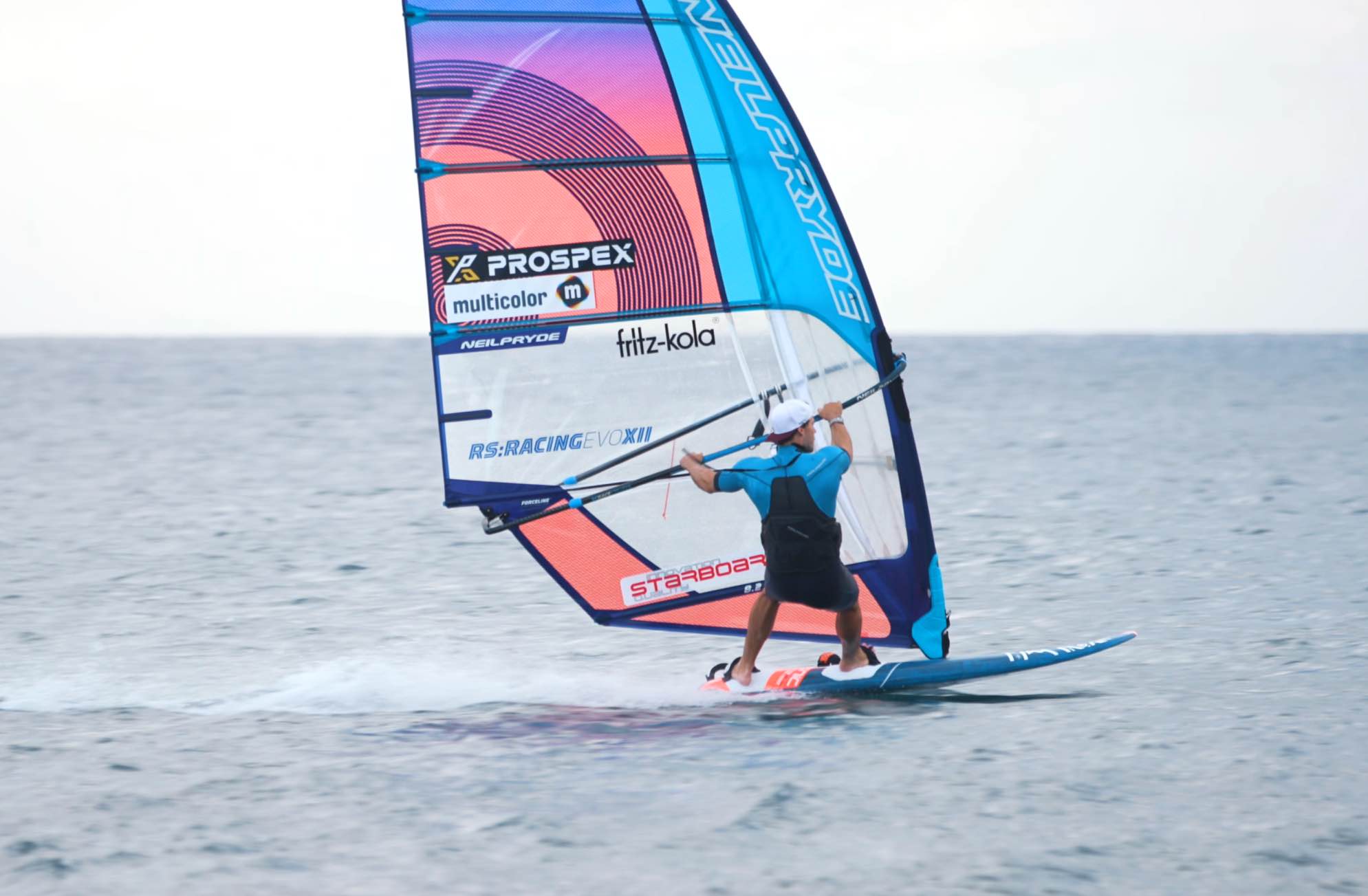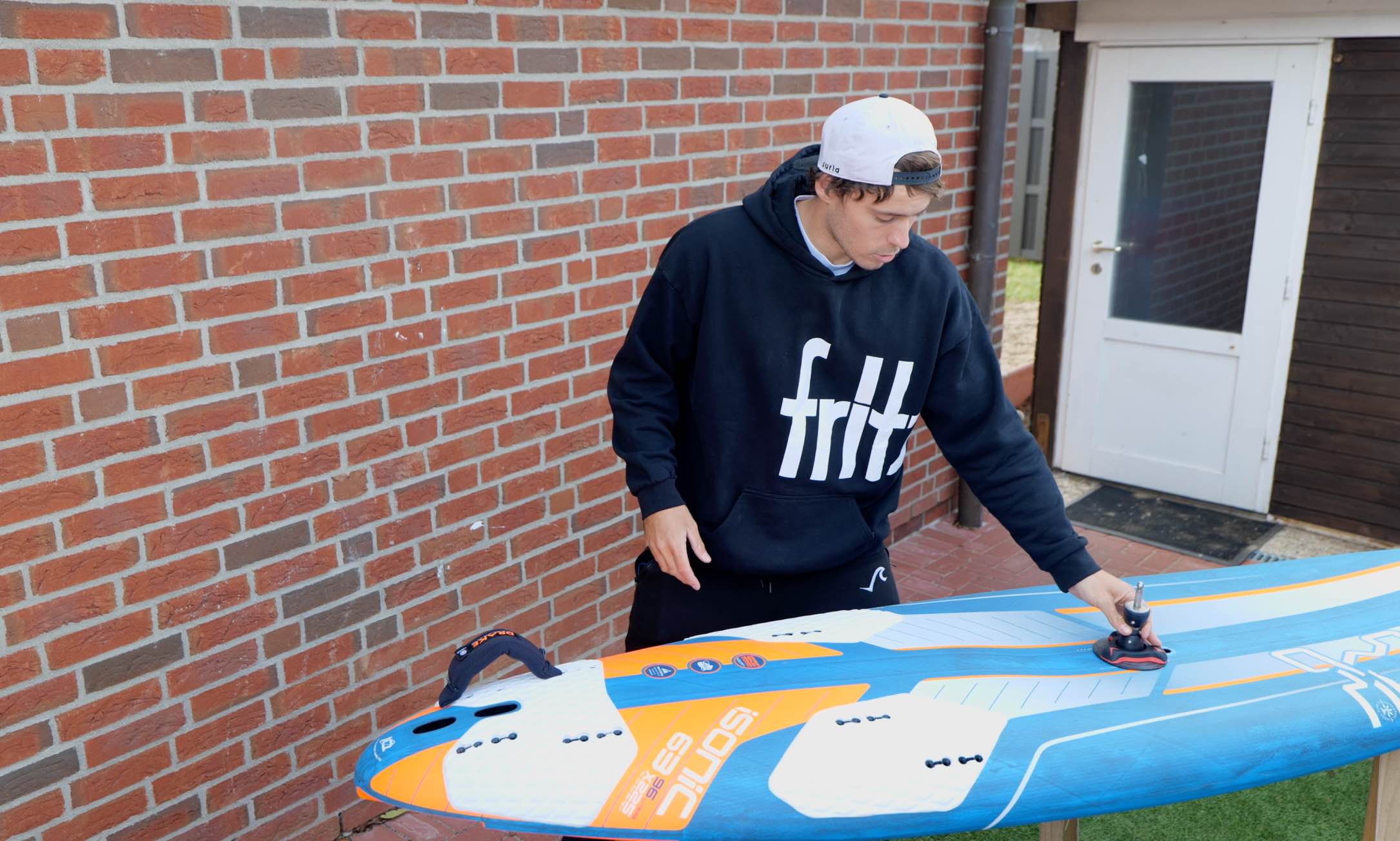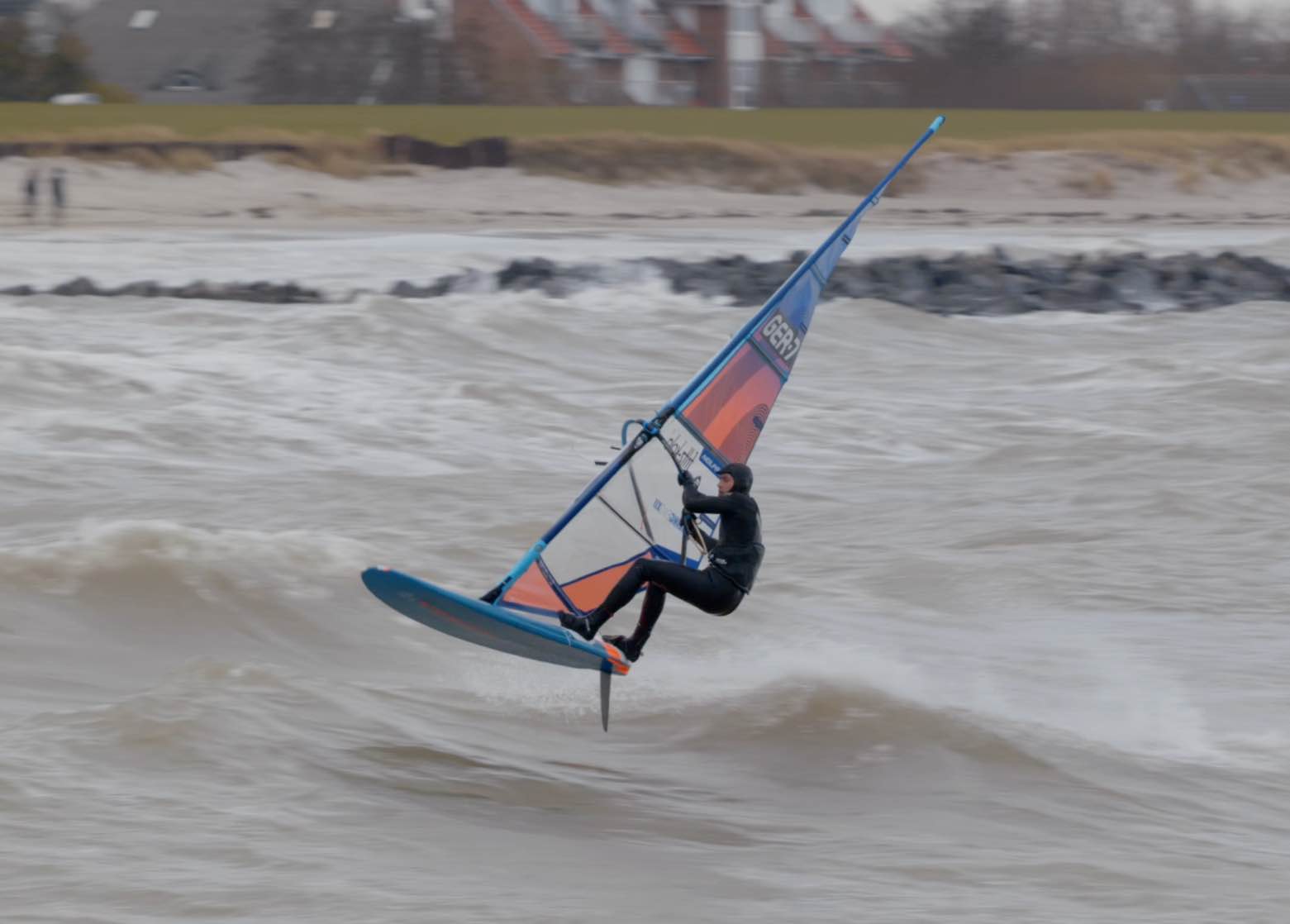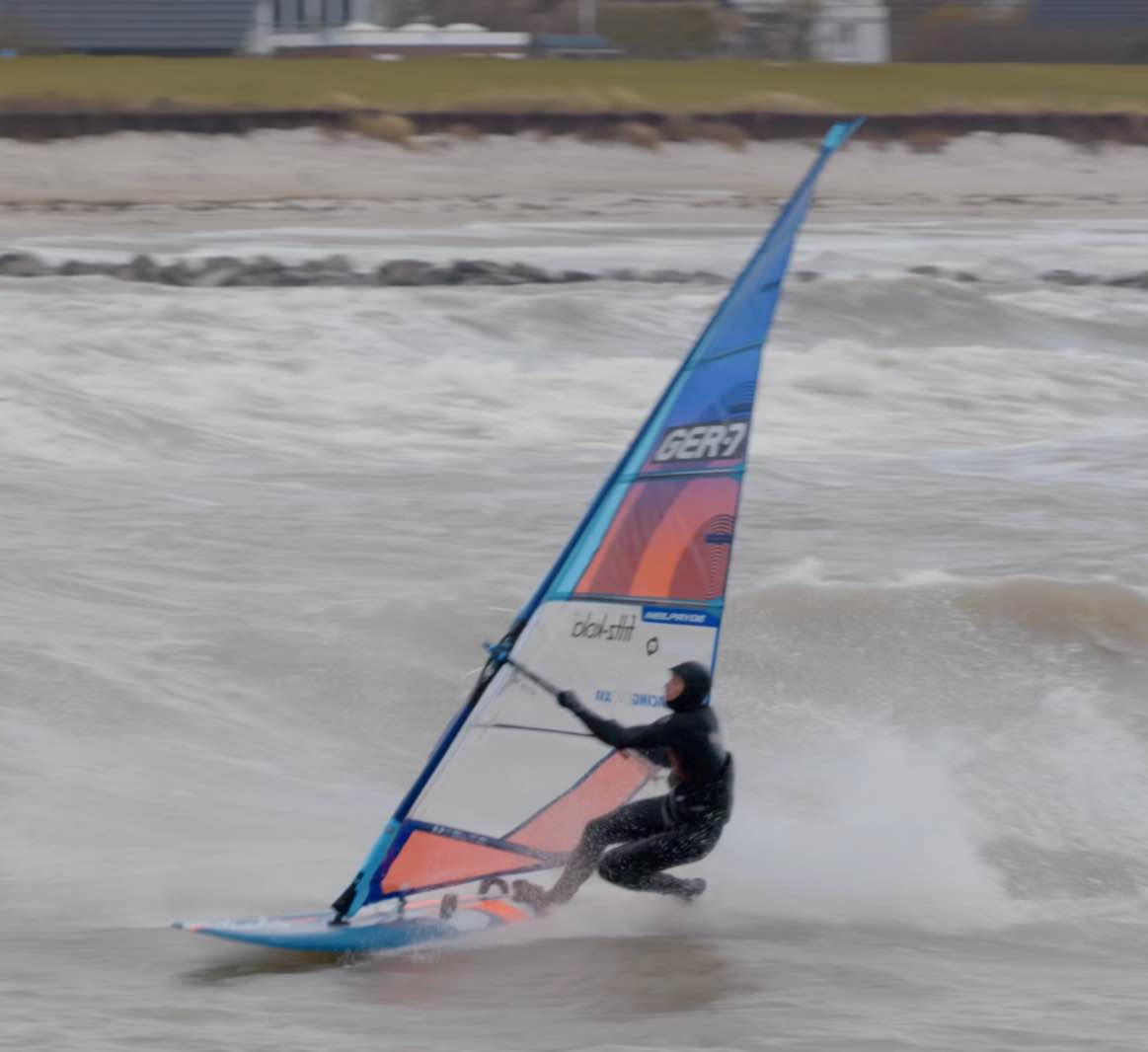It’s time to learn about Flatwater Blasting and how to really, really, really fly with the gear!
If you are into slalom sailing and wonder how the pros go that much faster, then you are lucky! Nico Prien explains how you can learn to balance speed and control and hopefully you can improve your sailing with these super great tips!
Some key points to focus on from Nico Prien:
Balance Speed versus Control – Gear Setup
The less board you have touching the water the less friction, but also less control. The more board you have touching the water the more control you have, but also less speed. Your gear, your skills and your training determine your success in really, really, really flying. So, you’re going learn to balance speed versus control.

We’re going to start with the gear. Now keep in mind that your gear and your gear setup has a lot to do with your stance. The idea with flatwater blasting is to move your stance rearward as your speed increases so that the nose rises off the water and the board rides with less friction as it is mostly on the tail.
If there’s barely any board on the water, then it will become uncontrollable, so you want to find that sweet spot for your skill level. To do this you need the gear to be set up rearward. The mast base should be moved toward the rear and the foot straps should be moved toward the rear and also outboard. A beginner will need to start with the foot straps more inboard, but the goal is to learn to ride with the foot straps outboard so that your heels actually approach the board from the side rather than from the top.

You’re also going to need a good carbon fin. A carbon fin is important so that you have proper flex and reflex, and so you can really stand on the fin and drive the wind energy into the board and fin.
So once you have your gear set you have to develop the skills to use the gear. Remember, the secret is balancing speed and control. And if you improve your skill you can have more speed because you are better with control. So how do you do it?
Shift your body rearward on the board
As the board speed increases you need to shift your body rearward on the board. The nose starts to come up and you’re riding more and more on the tail. You need to pay close attention on to your body tension. Your body is going to translate the sail power into the board and then on to the fin. You have to be in control of the gear, not the gear in control of you.
If your body is tense and rigid then power will be transferred more directly into the board for speed. The idea is to keep pressure on the fin steady. If your body is loose and not under tension you may not be transferring the power from the sail as directly.
So again, there is a balance between speed and control. You also need to think about railing the board. This means allowing the windward rail to raise slightly by lifting the heels a little. When a bit of wind gets under the board this helps us to fly over the chop.
Faster to fly above the chop than to smash through it
If you can fly above the chop you’ll be faster than if you are smashing through the chop. As we said earlier your foot straps must be set in the outboard position so that your heels approach the board from the side. This helps a lot with smoothing out the chop. If your heels approach from the top of the board then you’ll bounce up and down as you fight the chop, but if you are able to approach from the side then you can control the board on the chop.
Of course, as you can imagine, railing the board requires lots of practice. Too much air under the board and you’re going to take a nasty crash. Like this one:


Steady pressure on the fin and scan the water
So be gentle as you build muscle memory for this. And all the time you must keep steady pressure on the fin with proper body tension while you’re leaning back and pulling on the front foot strap. The gusts and the chop will be coming at you, so your eyes need to be constantly scanning the water. Watch for changes in the surface texture just upwind and in front of you so that you can prepare for the gusts. If you’re not prepared then a big gust can disturb the board, and even make you crash.
But a big gust could also increase your speed if you prepare. In order to gain control you may need to bring the nose down a bit, apply more mast base pressure, rail the board less, or even open the sail a bit. And the less you disturb the board while doing all of this the greater speed you can maintain.
Training
So we’ve talked about gear and skills, but it’s a lot of stuff to build into your muscle memory. That brings us to talking about your training. Windsurfing is so much fun that a lot of riders get to the water and they are having so much fun, they completely forget about having a training plan to improve skills. If you want to improve faster, it’s good to have a plan. Training is different than riding. It’s about focused fun versus free fun. You don’t want to do all focused training and miss out on the free fun, so I suggest doing a 10-15 minute fun warmup, and then dedicate 20-30 minutes to specific focused training. After that just have fun again.
Remember, speed versus control. Now get out there and get it good!!!
-Nico Prien







